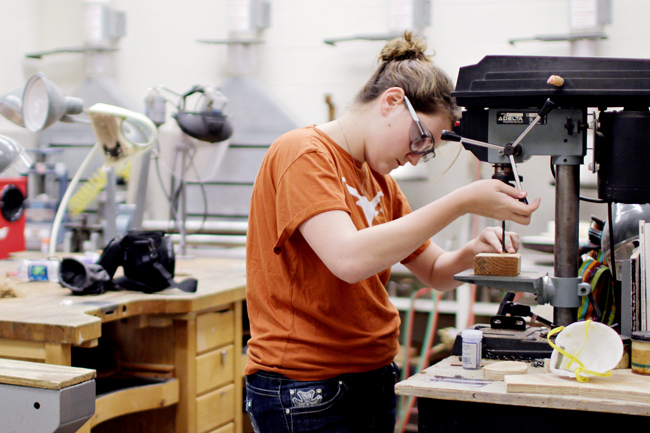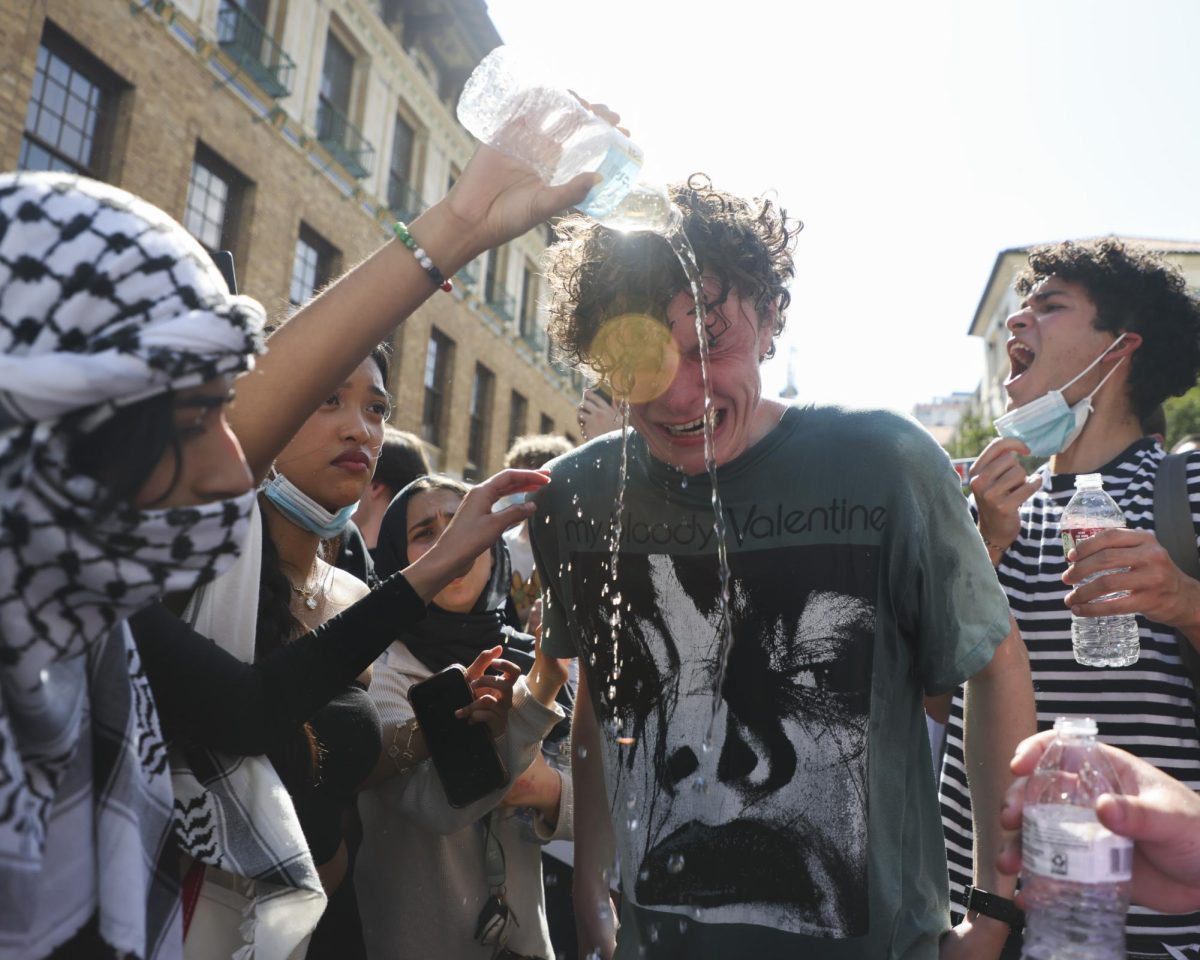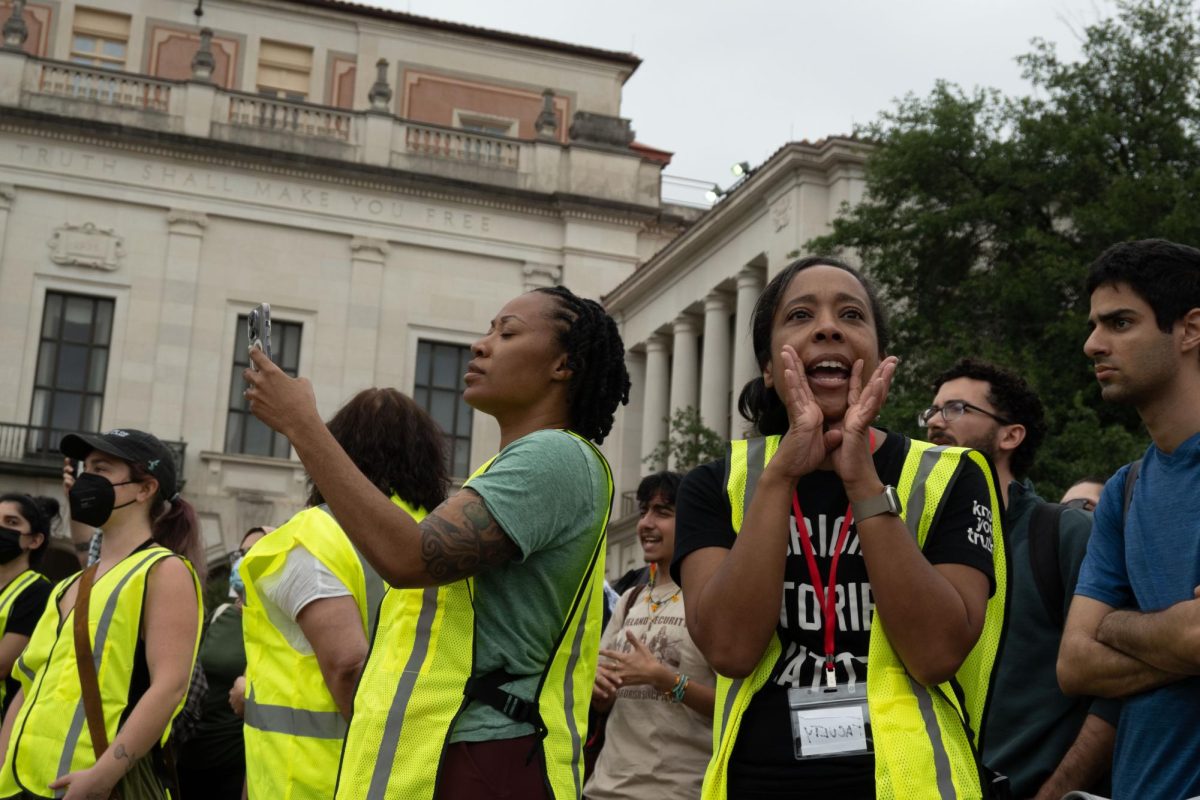Molding cold wet clay and soldering metals into jewelry may soon not be an option on campus, leaving art students with fewer areas of study to explore.
Jack Risley, Department of Art and Art History chairman and sculpture professor, said the Studio Art Program in the College Fine Arts is undergoing curriculum changes, including cutting ceramics and offering only one more semester of intermediate and advanced metal courses in the fall, effectively ending both programs.
Risley said the changes were prompted by the loss of retiring faculty members in areas including ceramics and metals. He said the department is aiming to offer more interdisciplinary courses that teach students techniques with a variety of mediums, within one course.
“We’ll be hiring a whole new generation of faculty and it’s an opportunity for the department to take a moment to think about what it needs in its future,” Risely said.
Studio art junior Jessica Steinman, who is in upper division courses for both ceramics and metals, said losing both will impact her graduation plans and her ability to work in the mediums.
“They told us last year they would slowly phase out ceramics and we just recently heard about metals a couple of weeks ago,” Steinman said. “Now, with no more ceramics classes and one semester of metals left I guess I will have to focus on sculpture and painting.”
Steinman said trying to incorporate elements of ceramics and metals into sculpture would not allow the time necessary to learn how to properly use equipment, such as ceramics’ kilns and metal casting.
“The new sculpture class just sounds like wishful thinking,” Steinman said “I came to UT because of the options I had to study and now they’re taking them away.”
Shalena White, graduate student and metals teaching assistant, said low enrollment in classes is partly because of the demanding work to mold and cast metal even at a small scale. White said although the department guaranteed she could continue use the course facilities as the only graduate student working in metals, losing her teaching assistant position and the undergraduate students to collaborate with is unfortunate.
Risley said students will not lose all access to the techniques, although courses will not be dedicated to ceramics or metals.
“Metals is a constructive process and although it is a smaller scale, that is typical of what is done in sculpture,” Risley said. “Those methods will continue to be offered through our sculpture courses. We’ll maintain a lot of the equipment in metals and some aspect of working with clay.”
Although the program is losing two handcraft courses, Risley said the department will be installing a Digital Fabrication Lab that will expand digital production and start spring 2014.
“Although we are losing some areas, we are also gaining the digital lab,” Risely said. “Art history has a need for modeling for archeological purposes. Design has a real need for 3D digital output. It’s part of the digital toolkit of what designers typically use nowadays. It has a lot of applications for studio, in some ways it’s an extension of print making.”
White said although the digital lab will provide students more opportunities to find an areas they are passionate about, it may not helpful in preparing them for work after graduating.
“Student may come to rely on this machine to help make their work and that might not be sustainable because when they graduate they most likely won’t have access to 3-D printers,” White said. “It’s really important that when students leave an art program they have tools to use in the real world. I really value something hand made and those are skills you can carry with you.”




















